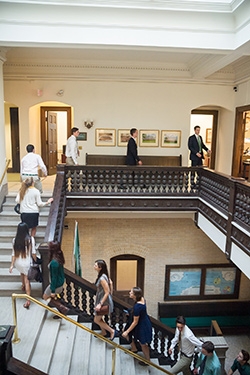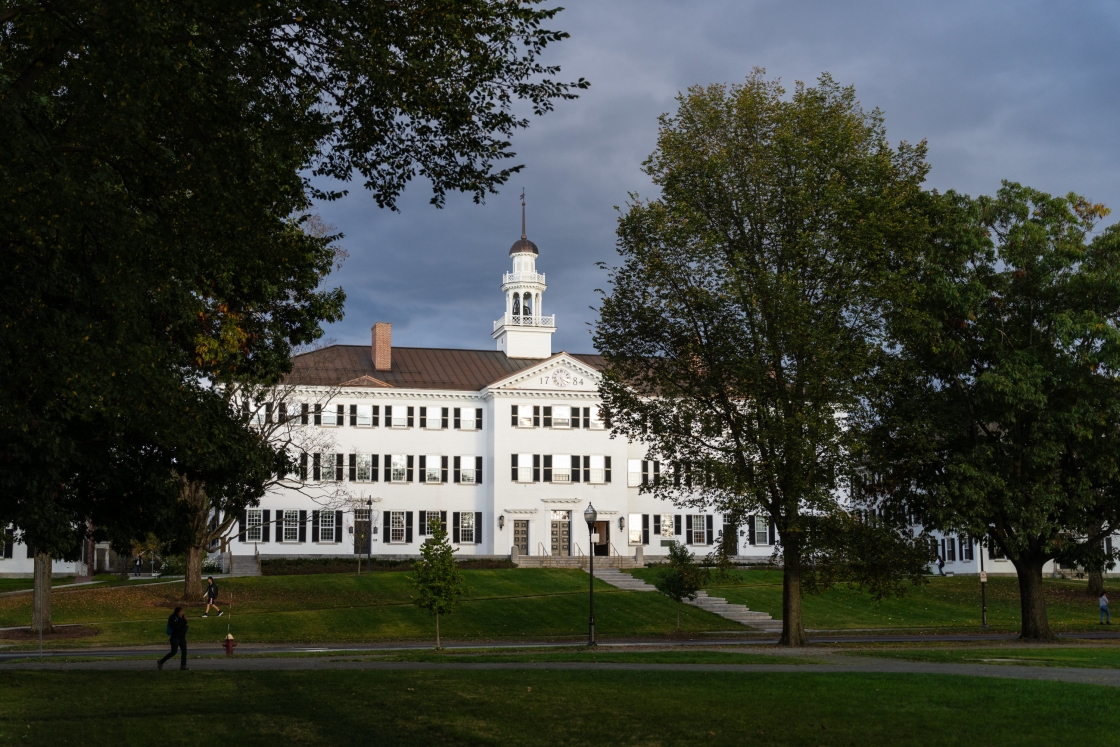The first 483 members of the Class of 2019 received offers of admission today as Dartmouth notified early decision applicants of their acceptance.
The accepted students, who were informed of the College’s decision via a secure website, are from a pool of 1,859 early decision applicants. This marks a 10.7 percent increase over the number of early decision applications submitted for the Class of 2018.

The admissions office anticipates that when the ’19s enroll in September, early decision students will comprise about 41 percent of the incoming class. By applying through the early decision program, the applicants made Dartmouth their first choice over all other institutions and agreed to attend if admitted.
“The growth in the number of early decision applicants did make this phase of the process very competitive,” says Dean of Admissions and Financial Aid Maria Laskaris ’84. “The group of students admitted in the early decision round give us a terrific start to our work to build another outstanding incoming class for Dartmouth, particularly given their exceptional academic and extracurricular achievements and the diverse array of backgrounds represented.“
Among the accepted students who attend schools that report rank, nearly 90 percent rank in the top 10 percent of their high school class. The mean SAT score of accepted students is 2145 (out of 2400); the mean ACT score is 32 (out of 36). Forty-nine percent of admitted students attend public high schools, 46 percent attend private schools, and five percent attend parochial schools.
Half of the students admitted in early decision attend schools in the New England and Mid-Atlantic regions (22 percent and 28 percent, respectively). Nine percent are the first generation in their families to attend college; 19 percent are the sons and daughters of Dartmouth graduates. Students of color make up 26 percent of the admitted group and eight percent of the admitted group are international students. Fifty percent of the admitted students applied for financial aid.
Dartmouth partners with numerous community-based organizations to reach high achieving students from under-resourced schools and communities, Laskaris says. “These organizations serve an increasingly important role in advising and mentoring students on the college application process, particularly where those resources are not available to students in their schools.”
Key to the College’s ability to enroll increasingly talented and diverse students is a generous need-based financial aid program that guarantees to meet 100 percent of students’ demonstrated need for all four years. Students from families with incomes below $100,000 receive free tuition and loans are not packaged in their financial aid awards. For students who do borrow, the average total indebtedness at graduation is $16,339, approximately half the national average.
